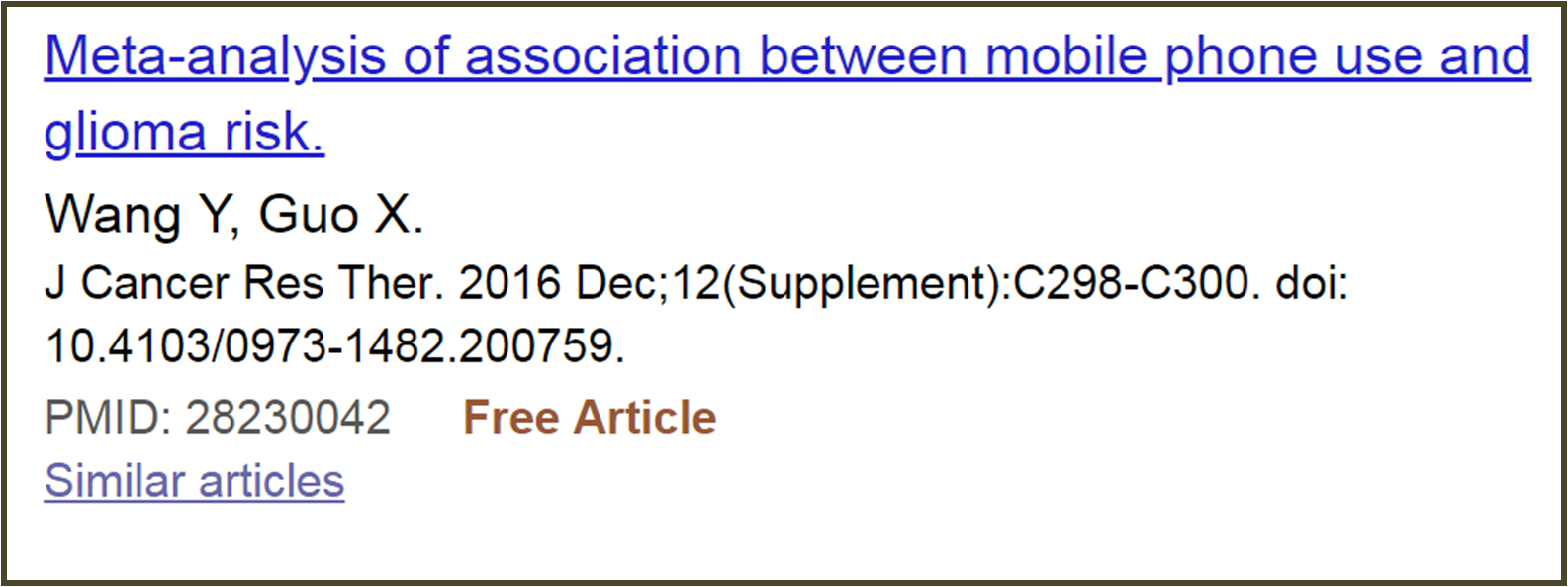

Electromagnetic Fields Search 101
Electromagnetic field impact on human health and environment
Real time automatic interface for information search
Electromagnetic Fields Search 101 is a project developed by the School of Medical Sciences and the School of informatics of the National University of La Plata, Argentina and by the School of Medical Sciences of the National University of Cuyo, Argentina under the framework of the Program of Incentives for Teachers and Researchers in National Universities.
Director: Prof. Dr. Osvaldo M. Spinelli
Codirector: Prof. Dr. Horacio P. González
Participants and Collaborators: AGUIRRE, N. Gerardo; BRISSON, P. Andrés; CASTRO, N. Edgardo; CORDERO, M. Cristina; CREMASCHI, F. Eduardo; LIMA, M. Silvia; SANCHEZ, D. Gonzalo; STAIANO, A. Silvia; STAIANO, M. Ángel y STRADA, V. Beatriz

School of Medical Sciences
National University of La Plata
La Plata - Argentina

School of Medical Sciences
National University of Cuyo
Mendoza - Argentina

School of informatics
National University of La Plata
La Plata - Argentina
Electromagnetic Fields Search 101 is an interface for automatic bibliography information search and free full texts in real time upon issues related to electromagnetic field and its impact on health and environment. The interface functionality is based on PubMed’s feature of allowing a search strategy to be captured as a web address. Thus we have designed and built an icon-based virtual library with automatic searches based on embedded search strategies. This interface is organized in two Main Areas: lectromagnetic fields and Mobile cell phones.
How does the interface work?: The two Thematic Areas have an ordered list of terms displayed on a table containing links that are matically activated for the searching procedure and that are automatically activated for highly sensitive and specific referential bibliographic search and in real time (updated according to the requested date). Information search on bibliographic database MEDLINE/PubMed of the National Library of the United States of America is created to be used without the need on the part of the user to be competent in advanced search. The search interface was designed to be automatically updated in real time arrantying updated retrieval of information. On the left of each term there are two icons. On clicking upon the red icon updated search is obtained automatically and in a real time (according to the date of request) with the abstracts corresponding to the topic of the scientific works requested. On the other hand, to click on the green icon full free texts could be retrieved. In both cases the results obtained by the search are sorted in chronological order with the newest records listed first.
How to obtain more information by means of Related or Similar Articles: ach bibliographic search in PubMed generates a link to related or similar articles. It is located below each PubMed records and it is a database tool that helps to localize similar or related articles with those similar to the original record. If you click on ‘similar Articles’ PubMed carries out a new automated search based on a complex algorithm which compares words in the title, words in the abstract and assigned MeSH terms. The results are displayed and ranked by relevance (instead of chronological order) from most relevant to less relevant in comparison with the original citations.

The image above is an example to show the structure of a record of PubMed where there is a link: Similar articles. The result of activating this link will be a non-chronologically ordered list of records but one ranked from the mostly relevant to least relevant one being ranked at the first place the original record at which the related articles were requested.
Thematic Areas
Electromagnetic Fields |
Mobile Cell Phones |
||
|
Electromagnetic spectrum |
Mobile phone base stations |
||
|
Electromagnetic Radiation |
Mobile phone base stations and Electromagnetic fields |
||
|
Specific Absorption Rate (SAR) |
Mobile phone and CEM-RF |
||
|
Thermal effects of Electromagnetic Radiation |
Mobile phone |
||
|
Non-thermal of Electromagnetic Radiation |
Mobile phone and Brain |
||
|
Radiofrequency Electromagnetic Fields (EMF-RF) |
Mobile phone and Brain neoplasms |
||
|
Electromagnetic fields (EMF) |
Mobile phone and Blood-brain barrier |
||
|
Electromagnetic Fields AND Cognition Disorders |
Mobile phone and DNA damage |
||
|
Magnetic Fields |
Mobile phone and Spermatogenesis |
||
|
Static Magnetic Fields |
Mobile phone and Oxidative stress |
||
|
Static Electric Fields |
Mobile phone and Reactive oxygen species |
||
|
Ionizing radiation |
Mobile phone and Melatonin |
||
|
Non-ionizing radiation |
Mobile phone and Hearing disorders |
||
|
Non-ionizing radiation and Neoplasms etiology |
Mobile phone and Salivary gland neoplasms |
||
|
Terahertz Radiation (THz) |
Mobile phone and Meníngeal neoplasms |
||
|
Microwaves |
Mobile phone and Meningioma |
||
|
Microwaves and Radiation-induced malignancies |
Mobile phone and Glioma |
||
|
Electromagnetic hypersensitivity |
Mobile phone and Glioblastoma |
||
|
Power Lines |
Mobile phone and Neuroma |
||
|
Low Frequency Electromagnetic Fields |
Mobile phone and Memory disorders |
||
|
High Frequency Electromagnetic Fields |
Mobile phone and Interference with medical devices |
||
|
Ultraviolet radiation |
EMF and Interference with medical devices |
||
|
Tanning Beds |
Mobile phone and Electrocardiography (ECG) |
||
|
Ultraviolet Index |
Mobile phone and Electroencephalography (EEG) |
||
|
Visible light spectrum |
Wireless Technology adverse effects |
||
|
Visible light spectrum |
Wireless Local Area Network (WLAN) |
||
|
High-voltage direct current (HVDC) |
|
||
|
|
|
||